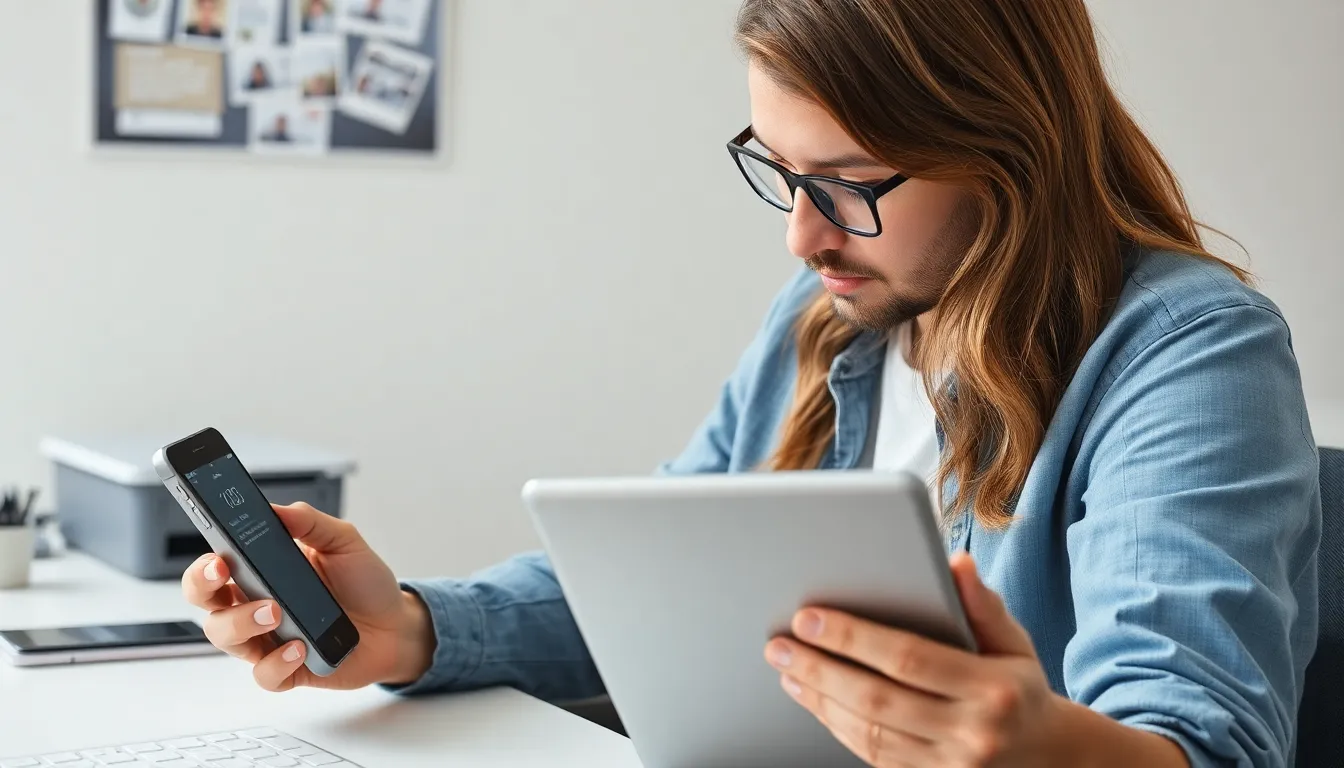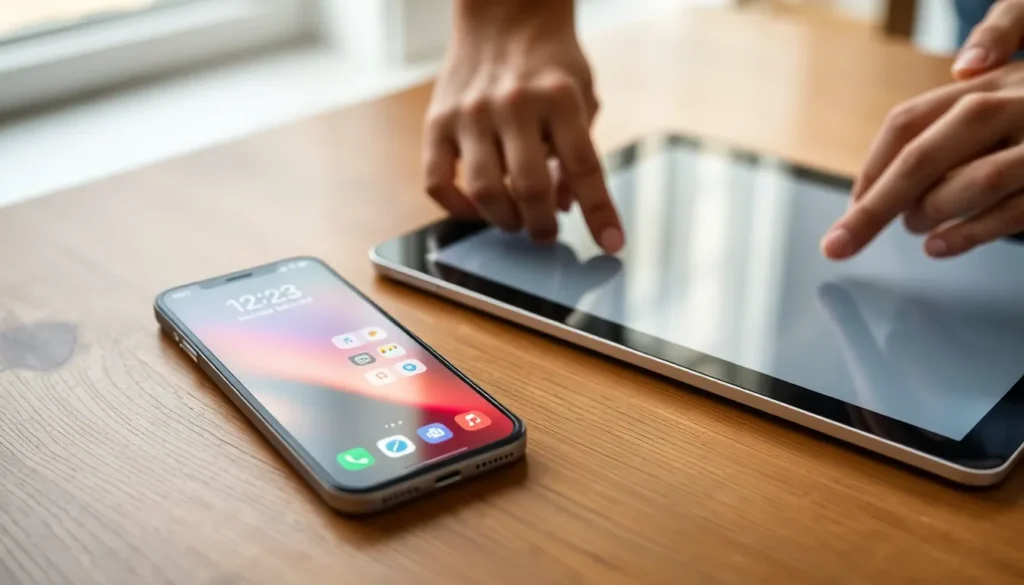Table of Contents
ToggleIn a world where devices seem to have a mind of their own, separating your iPhone from your iPad might feel like trying to untangle a pair of earphones after a long day. They’re practically best friends, sharing everything from messages to app data. But sometimes it’s necessary to give them some space, whether it’s for privacy or simply to declutter your digital life.
Understanding The Need To Separate iPhone From iPad
Separating the iPhone from the iPad can enhance personal privacy and digital organization. Several scenarios prompt users to consider this division.
Common Reasons For Separation
Privacy concerns top the list. Users often wish to keep personal data, like messages and photos, confined to one device. Work-life balance also plays a role; separating devices allows individuals to draw clear boundaries between personal and professional life. Additionally, the need for organization arises when shared apps clutter app screens across devices. Users might find it easier to manage tasks and keep track of appointments by delegating them to separate devices.
Benefits Of Separating Devices
Enhancing security remains a major benefit. When devices are independent, the risk of inadvertent data sharing decreases. Improved battery life is another advantage; each device can focus on its primary functions without needing constant synchronization. Increased customization also becomes possible. Users can personalize settings and apps on both devices to suit unique preferences and needs. Upgraded productivity often results from less distraction, leading to a more streamlined digital experience.
Steps To Separate iPhone From iPad

Separating an iPhone from an iPad involves a few straightforward steps, allowing for better privacy and organization. Users can efficiently manage their devices by following these processes.
Using Apple ID Settings
Accessing Apple ID settings provides a significant first step. Users must select their account in the settings app on both devices. Signing out of the Apple ID on one device disconnects them. Afterward, the non-signed-out device retains access to apps and data linked to that account. This action effectively separates the devices, limiting shared features such as iMessage and FaceTime calls between them.
Disabling iCloud Sync
Disabling iCloud sync plays a crucial role in maintaining privacy. Users should navigate to the iCloud settings on both devices. Turning off specific sync options, like Photos or Contacts, ensures content does not share across devices. After completing this step, any changes made to one device won’t reflect on the other. This helps users keep personal files and information exclusive to each device, enhancing security and reducing clutter.
Adjusting Shared Features
Adjusting shared features strengthens the separation process. Users can head to settings and explore options that combine services, such as Handoff or Continuity. Switching off these features lowers instances of cross-device notifications or document sharing. This adjustment allows each device to function independently, making it easier to manage work and personal tasks without distractions.
Troubleshooting Common Issues
Separation issues can arise even after following the steps to unlink iPhones from iPads.
What To Do If Devices Are Still Linked
Check Apple ID settings first to confirm that the sign-out process completed. If devices remain linked, restoring the factory settings on one device might be necessary. Users should back up important data before proceeding with this step. Another option involves turning off Bluetooth and Wi-Fi temporarily, which can disrupt the connection. Disabling features like Handoff and Continuity may also help to create a clearer separation.
Resolving Sync Problems
Monitoring iCloud settings can clarify sync problems between devices. Accessing iCloud and ensuring specific sync settings are turned off prevents unwanted data sharing. Users often find it useful to sign out and sign back into iCloud to refresh connections. Checking for software updates ensures both devices run the latest version of their operating systems, which can resolve incompatibility issues. Restarting both devices is another simple step that frequently fixes sync problems.
Best Practices After Separation
Separation between an iPhone and an iPad enhances user experience. Implementing effective management strategies maintains privacy and optimizes functionality.
Managing App Preferences
Customizing app settings is vital for each device. Users can selectively choose which apps remain on their iPhone or iPad to reduce clutter. Prioritize installing only essential applications on each device. Notifications can be tailored to specific needs, allowing fewer distractions. Individual app permissions can also be adjusted, ensuring that data sharing is minimized. Additionally, removing apps that duplicate each other prevents confusion and enhances usability.
Keeping Data Organized
Organizing data across devices simplifies access and reduces unnecessary overlap. Users should categorize personal and work-related files, storing them independently on each device. Utilizing folders for photos and documents streamlines content retrieval. Regular backups enhance data security without reliance on a single device. Each device can maintain its own separate note-taking or task management application to ensure proper organization. Setting reminders and alarms on each device independently helps separate personal and professional commitments.
Separating an iPhone from an iPad can significantly enhance user experience and privacy. By following the outlined steps, users can effectively manage their devices and reduce unwanted data sharing. This separation not only secures personal information but also allows each device to perform its primary functions without interference.
Adopting best practices for organization and customization ensures that both devices serve their intended purposes. Regular maintenance such as backups and software updates further supports optimal performance. Embracing these methods leads to a more streamlined and efficient digital lifestyle, where users can enjoy the benefits of their devices without the clutter and distractions of constant connectivity.




